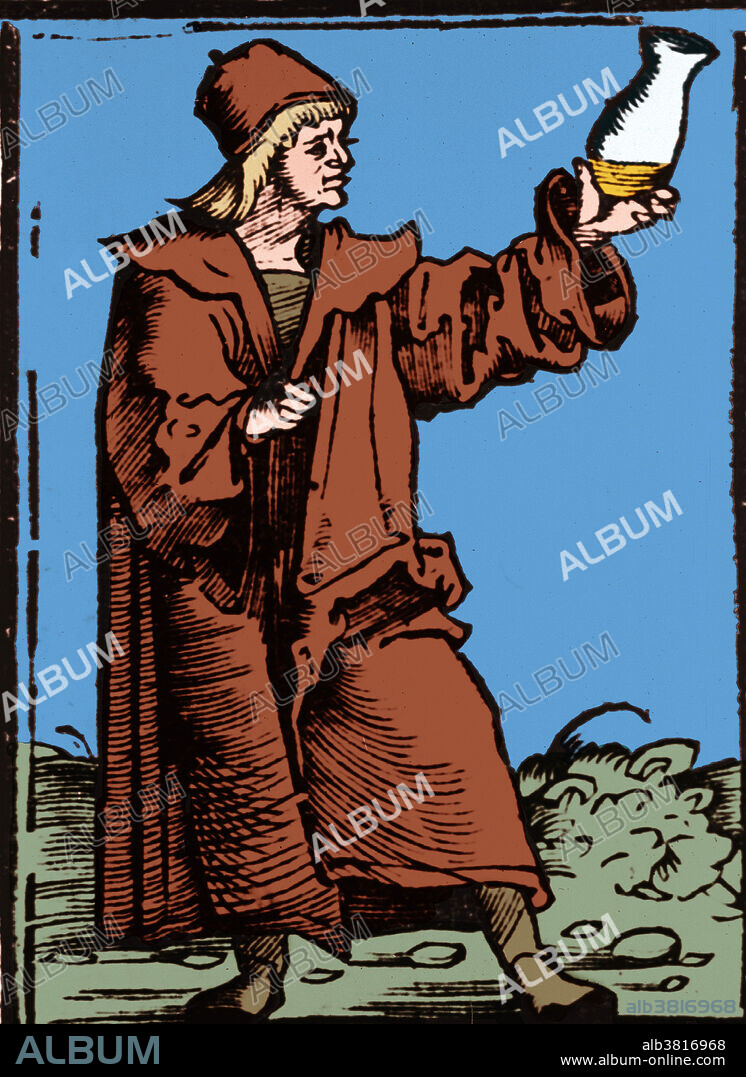alb3816968
Uroscopy, 1519

|
Add to another lightbox |
|
Add to another lightbox |



Title:
Uroscopy, 1519
Caption:
Doctor examining a glass vessel containing a sample of a patient's urine. In medieval medicine, uroscopy was an important diagnostic tool, urine having 29 attributes to be observed. From this the physician deduced the supposed levels of a patient's four 'humours' (bodily fluids): blood, yellow bile, black bile and phlegm. Illness was thought to be due to an imbalance in these fluids. It was thought that the imbalance could be redressed by changing the patient's diet, prescribing medicine, by bleeding the patient, or by surgery. Image drawn by Lorenz Fries of Colmar, Germany, in 1519.
Credit:
Album / NLM/Science Source
Releases:
Model: No - Property: No
Rights questions?
Rights questions?
Image size:
2700 x 3708 px | 28.6 MB
Print size:
22.9 x 31.4 cm | 9.0 x 12.4 in (300 dpi)
Keywords:
1519 • 16 16TH XVI XVITH SIXTEENTH CENTURY • 16TH CENTURY • ABNORMAL • ÂGÉS • ANALYSIS • ART • ARTWORK • CENTURY • COLORIZED • DIAGNOSIS • DISEASE • DOCTOR • DRAWING • ENHANCEMENT • FLASK • HISTORIC • HISTORICAL • HISTORY • ILLNESS • ILLUSTRATION • INFECTED • INFECTION • MALE • MAN • MEDICAL • MEDICINAL • MEDICINE • MEDICO • MEDIEVAL • MEN • MIDDLE • PATHOLOGY • PEOPLE • PERSON • PRACTICE • URINE • UROSCOPY • WOODBLOCK • WOODCUT • XYLOGRAPHY
 Pinterest
Pinterest Twitter
Twitter Facebook
Facebook Copy link
Copy link Email
Email

